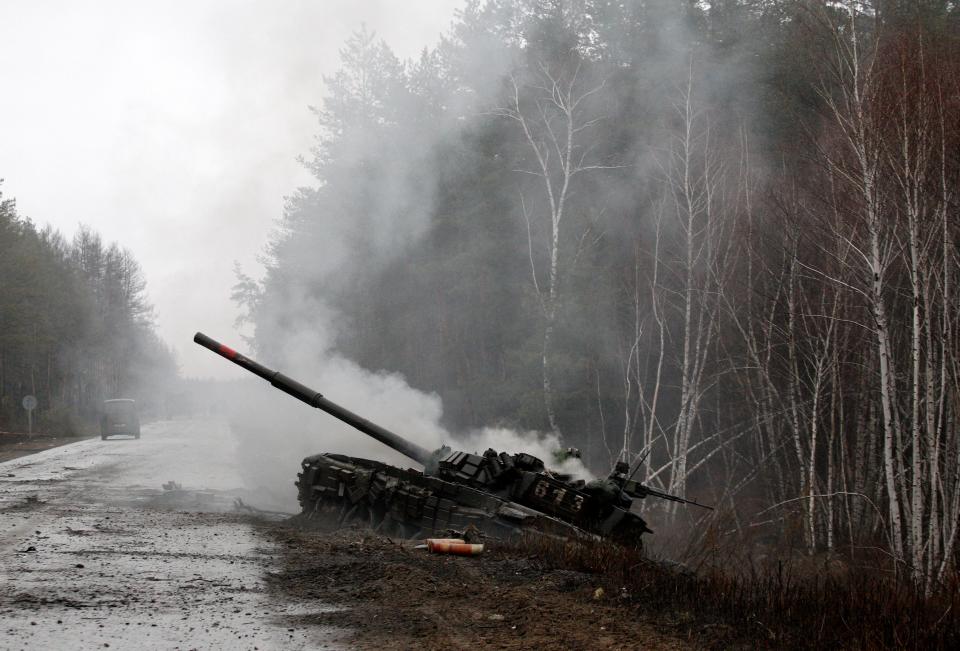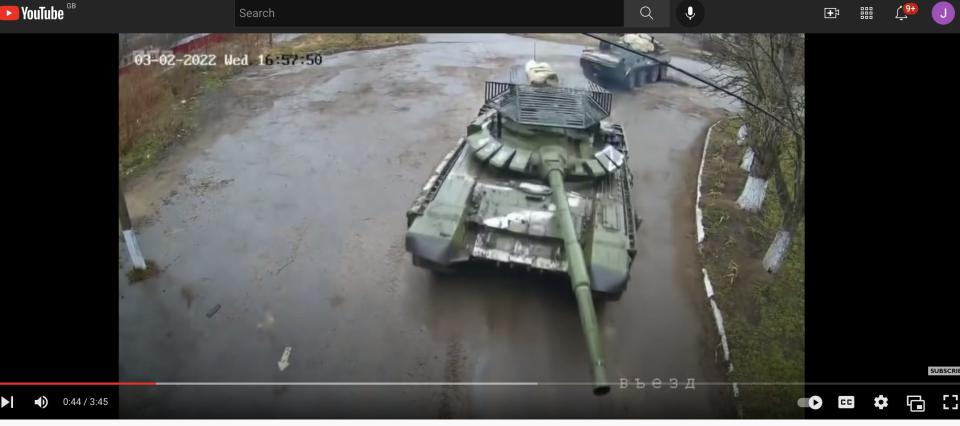Russian soldiers appear to be fixing makeshift cages to the turrets of their tanks in a crude effort to protect themselves against Ukraine's anti-tank missiles
Some Russian tanks seen with makeshift cages attached to them to protect against anti-tank missiles.
An expert told Insider that the cages are futile against modern weapons like the Javelin and NLAW.
The cages also disadvantage Russian tanks by increasing their visibility and adding weight.
Russian forces appear to be attaching makeshift metal cages to the tops of their tanks in Ukraine in a crude effort to protect themselves against anti-tank missiles.
Analysts say the cages are inadequate protection against the modern weapons used by Ukraine and demonstrate the Russian military's lack of preparedness for war.

"They've been nicknamed 'cope cages,' which I think shows the general more informed military view of how useful they actually are," Justin Crump, a military veteran, and CEO of risk intelligence firm Sibylline, told Insider.
"They give them psychological protection against weapons, but actually, they do very little."
—Alex Kokcharov (@AlexKokcharov) November 23, 2021
The cages are supposed to defend against anti-tank weapons that strike the top of the vehicle, where the armor is the thinnest.
Related video: How viral moments are shaping the war in Ukraine
"The idea is that if you set off a bazooka or a Panzerfaust, which is the German one, they're set off early and so they don't hit the tank itself. They kind of dissolve their energy at the wrong distance to work effectively," Crump explained.
However, the cages are largely ineffective against the modern anti-tank weapons used by the Ukrainians, such as the Javelin and NLAW, or Next-generation Light Anti-tank Weapon.
Many modern weapons are designed to counter that sort of protection, and the use of these cages shows an "incomplete understanding" of the latest systems, Crump explained.
Earlier this week, the BBC reported on the defeat of a Russian attack on the Ukrainian town of Voznesensk. Film captured on local security cameras shows a column of tanks and armored vehicles using makeshift cages and sandbags to give added protection.

The cages fail to protect against Ukrainian weapons, but they could also be disadvantageous to Russian tanks because of the added weight and height.
"The advantage Russian tanks have is that they're super small and very low, making them easy to hide. When you start doubling the height, you're getting rid of some of the advantages of the vehicle," Crump said.
The cages also make it harder for the crew to get in and out of the vehicles, according to Crump.
The lack of uniformity of the cages, and the fact that they are only seen on some tanks, shows that Russian units are largely improvising them, he said.
"It's by far the least effective form of tank armor they've got, and it more shows that they're limited in cleverer things like what we call active protection systems," Crump said.
—Oryx (@oryxspioenkop) March 15, 2022
Since launching its invasion three weeks ago, Russia's once-feared military has struggled to overcome Ukrainian resistance.
It has so far lost at least 270 tanks, according to the open-source weapons tracking site Oryx — which is around 10% of its estimated active force.
Some experts have said that the ineffectiveness of Russian tank attacks in Ukraine, compared with the effectiveness of anti-tank weapons such as high explosives and guided missiles, could arguably render tanks obsolete.
The Russian military largely uses Soviet-era T-72 tanks that date back to around the 1970s, Crump explained.
While they have some more modern tanks, the older ones were more suitable for upgrading and modifying.
"The saying always was that Russia has a large, modern army. We discovered that the modern part isn't very large and the large part isn't very modern. And the large part is increasingly getting smaller," Crump said.
Read the original article on Business Insider

 money
money 